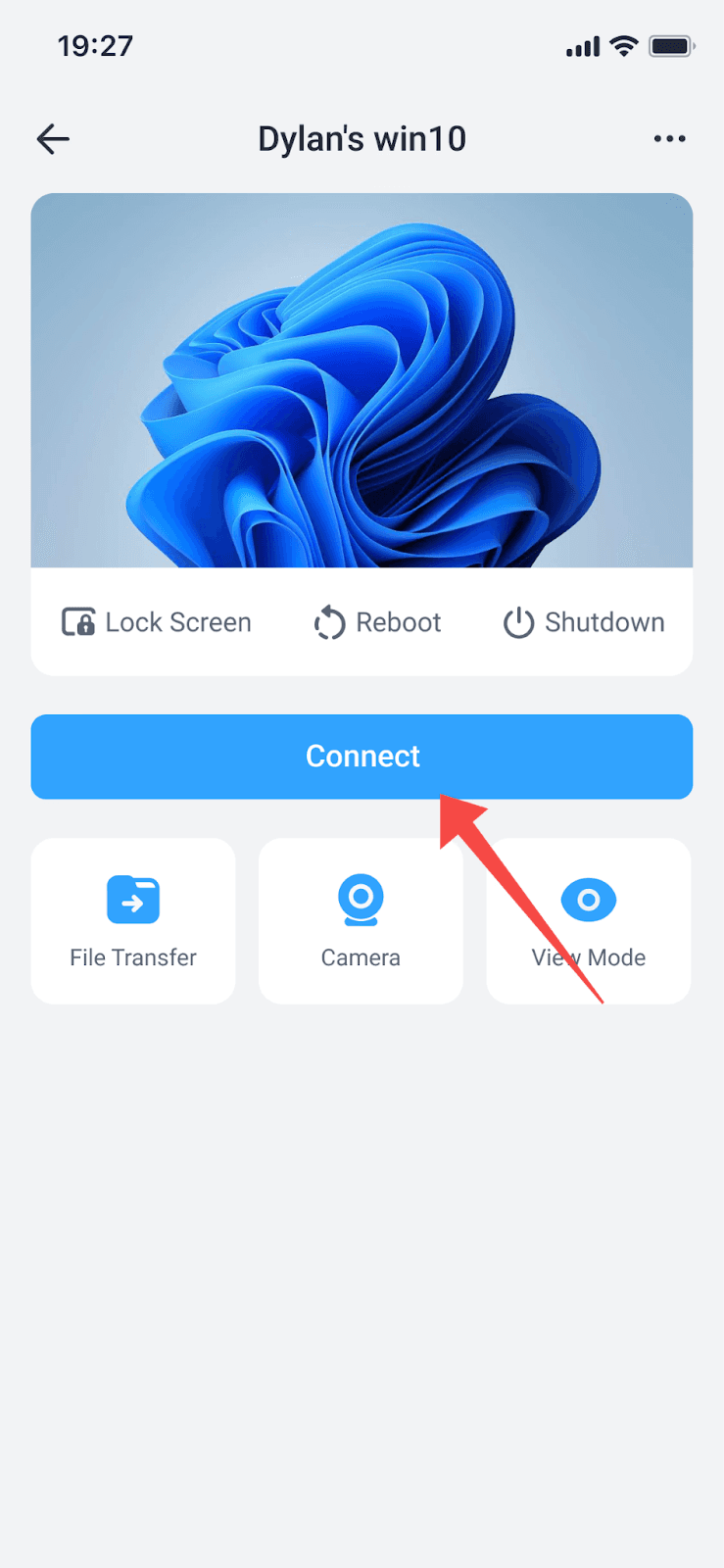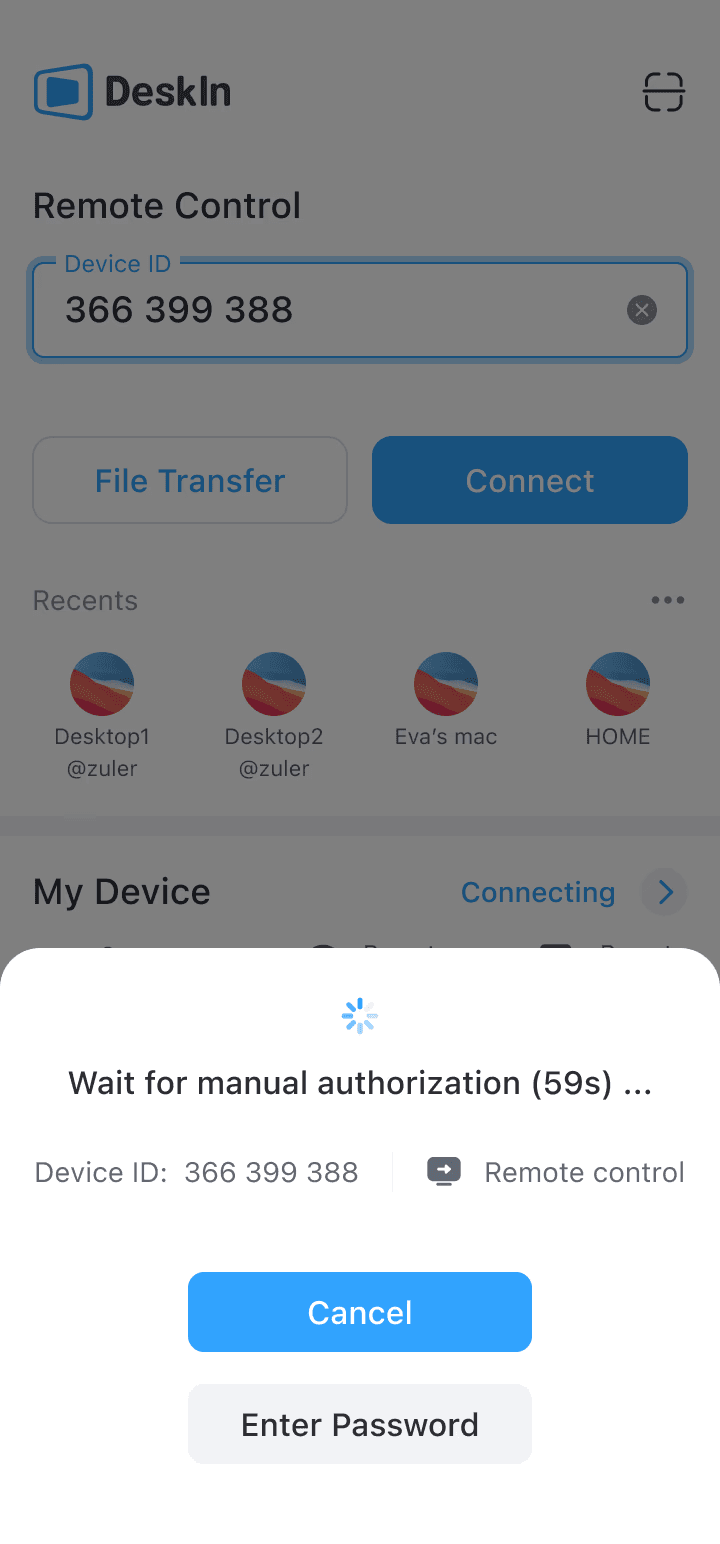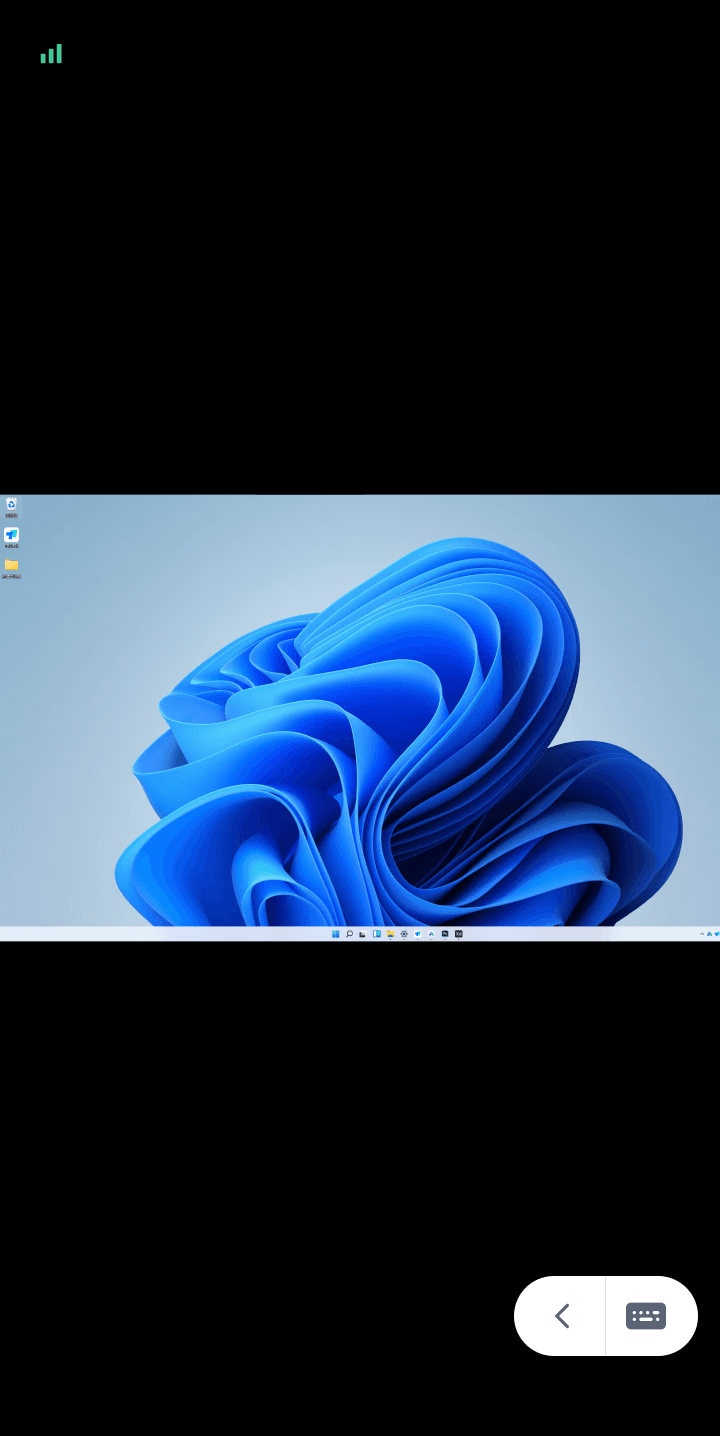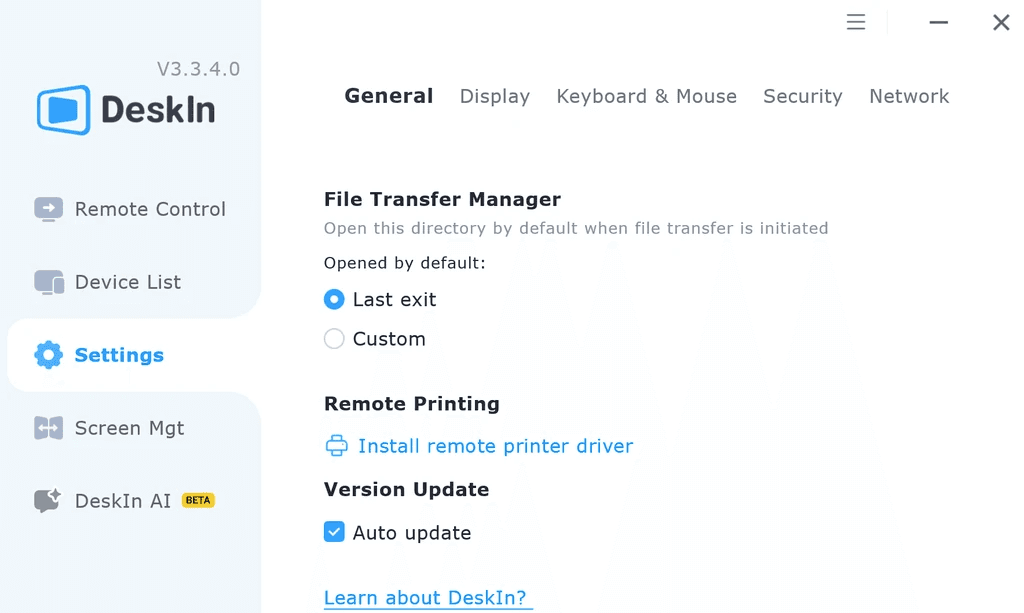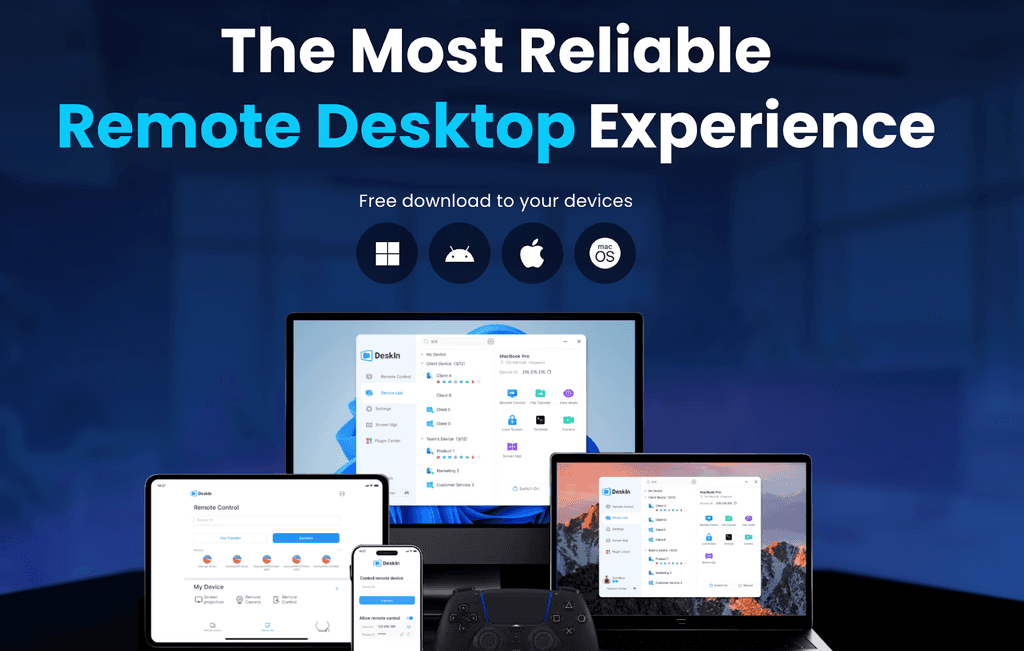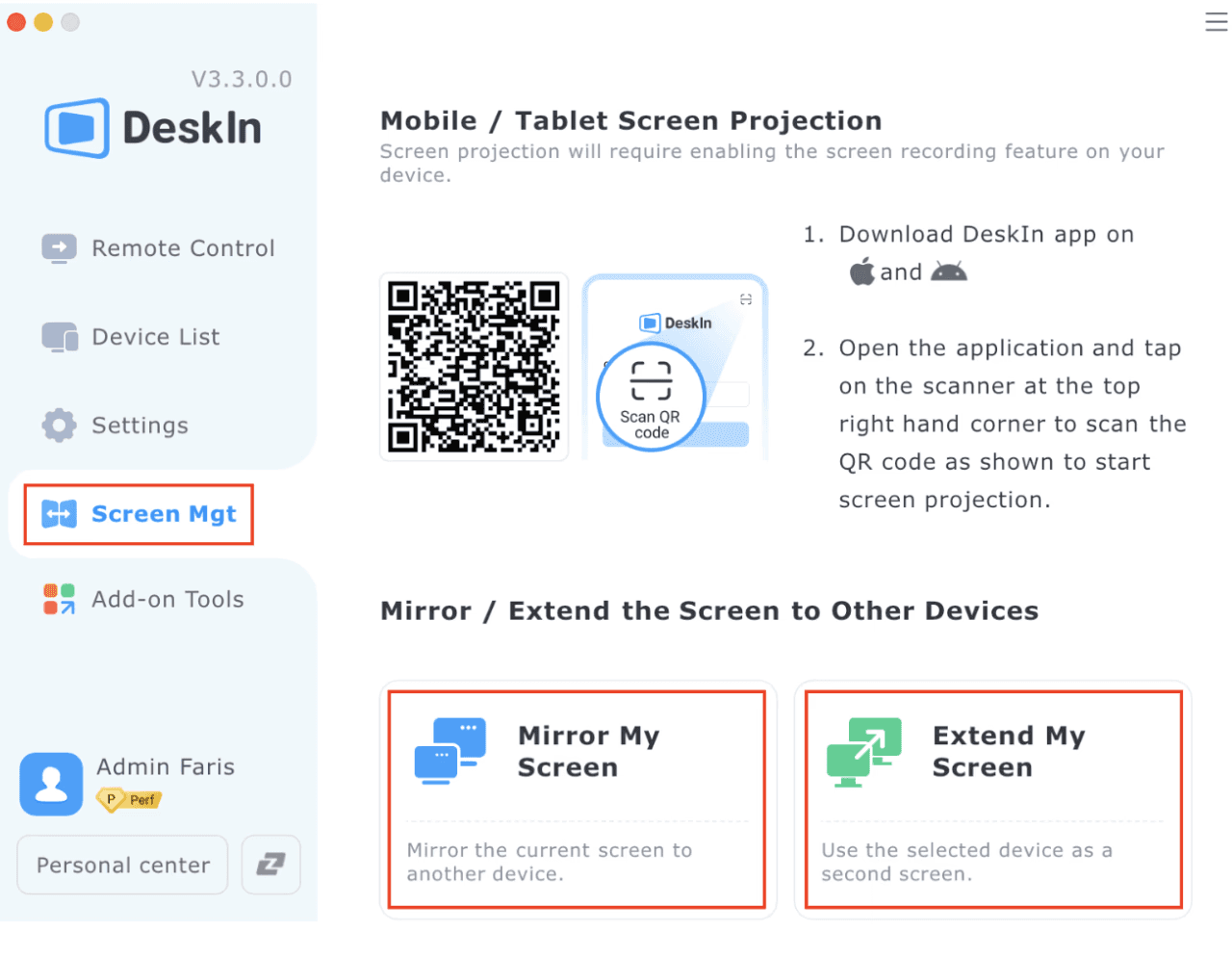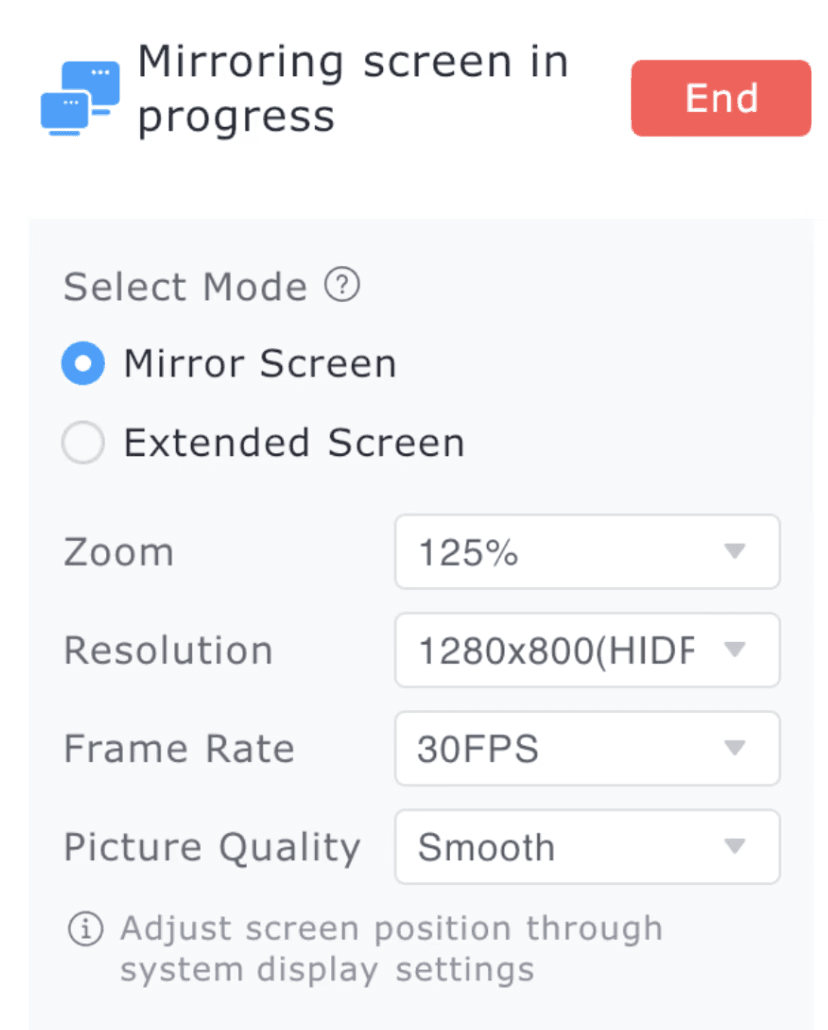When using remote desktop software, image quality is one of the most important factors affecting the connection experience. What factors affect the image quality of the remote connection? DeskIn remote software provides high-definition image quality up to 4K60FPS and 2K144FPS, while keeping latency within a few seconds. What enables them to do this? This article will answer all these questions.
Factors affecting remote connection image quality
Resolution and screen size: The higher the resolution, the clearer the picture. 720p videos are naturally clearer than 360p videos. With the same resolution, the larger the screen, the clearer it will be for reading. Try playing a 720p video on YouTube as well. Do you think it’s much clearer when you watch it on your mobile phone than on your computer?
Network connection speed: The higher the resolution, the more data needs to be transmitted at the same time. Currently, many video platforms or remote desktop software automatically adjust the resolution. When the network condition is poor, freezes or blurred images may occur.
Update rate and frame rate: The update rate represents the frequency of the screen updating per second, and the frame rate is the average number of images that the display card can render per second. Although it has no direct impact on the image quality, it will affect the smoothness of the image. . The update rate/frame rate is mainly related to the screen performance. In the case of remote connection, the update rate and frame rate performance of the remote software will also affect the connection experience.
Transmission efficiency: In addition to the above common factors, there is actually another factor, which is "transmission efficiency". If the transmission efficiency can be improved, then under the same network conditions, more data can be transmitted faster. data to improve the resolution of the screen. This brings us to the video encoder.
What Is a Video Codec?
Remote access is essentially a process of continuously taking screenshots of the remote desktop, encoding and compressing the image data, then decoding and restoring them to images and videos on local devices after transmission. Video codec technology plays a vital role in the process.
Encoding consists of three steps: sampling, encoding, and compression. Sampling is the process of intercepting frame data in the video stream, encoding is the process of processing this frame data and compressing it into smaller packets for transmission.
Decoding is the reverse process of encoding: the receiver opens the received packet, reverts it to a picture, and then arranges the pictures in order to form a video stream frame by frame.
Why Are More Efficient Video Codecs Needed?
Image quality is affected by internet speed during the remote connection process. Efficient video codec enables faster processing of image data and compresses the data package into a smaller size. Then it can deliver a smooth HD remote experience with lower resource usage, saving bandwidth usage and reducing packet loss rate makes remote operations smoother.
DeskIn: the Best Remote Desktop Software for Highest definition
DeskIn's core team has more than ten years of experience in video codec R&D. The two-pronged and in-depth optimization of algorithm and hardware optimization has created an efficient codec made for remote desktop. Leveraging extensive experience in video streaming encoding/decoding, DeskIn is able to deliver UHD (4K) quality remote sessions while maintaining latency within microseconds. DeskIn could also enable stable remote connections and excellent image quality even if the device has limited computing power, ensuring a smoother and HD experience during the remote work, collaboration and gaming.
How to use the high-definition remote software DeskIn?
Step 1: Install and register an account
Install DeskIn on your computer or mobile devices, register a free account and log in.
Note: If this is your first time logging in on a new device, you need to go to your registration email to complete verification to better protect your account security.

Step 2: Connect the devices
You can find devices that have logged in to the same account on the "Device list". Select the device you want to control and click "Remote control" on the toolbar on the right, then you are connected to the device.

You can all connect to the devices with "Device ID". Open DeskIn on the local device, enter the "Device ID" of the computer you want to control, click "Connect" then you are connecting to the device. You can use Password or Password-free method to verify the connection.

"Password-free" verification means you need to manually agree to the connection request on the controlled device. We recommend you set security password on "Settings" >> "Security settings". In this way, even if the device you want to control is remote located, you can connect it unattended.
Step 3: Adjust image clarity
Adjust image quality on mobile devices: After connecting, you can manually adjust the image quality by setting "Quality Selection" on the "Display" section and "Refresh Rate" on "Screen" section. You can adjust it according to your own network conditions. Mobile devices support up to 4K60FPS.

Adjust the resolution of the computer: After connecting, click to expand the toolbar >> click "View" >> "Image Quality Adjustment" and "Screen Refresh Rate" to adjust the image quality. You can adjust it according to your own network conditions. The computer supports up to 4K60FPS/2K144FPS.

Conclusion
This article introduces the factors that affect the image clarity of remote desktop software and why DeskIn is the clearest remote software. Thanks to the efficient video codec, the image quality of the free version of DeskIn can already reach 1080P 30FPS (HD), with the highest supported 4K 60FPS/2K 144FPS, while keeping latency at a very low level. If you want to enjoy the highest-definition remote connection experience, check DeskIn official website to learn more: DeskIn Personal Plans and Pricing | Most Affordable, High Performance
When using remote desktop software, image quality is one of the most important factors affecting the connection experience. What factors affect the image quality of the remote connection? DeskIn remote software provides high-definition image quality up to 4K60FPS and 2K144FPS, while keeping latency within a few seconds. What enables them to do this? This article will answer all these questions.
Factors affecting remote connection image quality
Resolution and screen size: The higher the resolution, the clearer the picture. 720p videos are naturally clearer than 360p videos. With the same resolution, the larger the screen, the clearer it will be for reading. Try playing a 720p video on YouTube as well. Do you think it’s much clearer when you watch it on your mobile phone than on your computer?
Network connection speed: The higher the resolution, the more data needs to be transmitted at the same time. Currently, many video platforms or remote desktop software automatically adjust the resolution. When the network condition is poor, freezes or blurred images may occur.
Update rate and frame rate: The update rate represents the frequency of the screen updating per second, and the frame rate is the average number of images that the display card can render per second. Although it has no direct impact on the image quality, it will affect the smoothness of the image. . The update rate/frame rate is mainly related to the screen performance. In the case of remote connection, the update rate and frame rate performance of the remote software will also affect the connection experience.
Transmission efficiency: In addition to the above common factors, there is actually another factor, which is "transmission efficiency". If the transmission efficiency can be improved, then under the same network conditions, more data can be transmitted faster. data to improve the resolution of the screen. This brings us to the video encoder.
What Is a Video Codec?
Remote access is essentially a process of continuously taking screenshots of the remote desktop, encoding and compressing the image data, then decoding and restoring them to images and videos on local devices after transmission. Video codec technology plays a vital role in the process.
Encoding consists of three steps: sampling, encoding, and compression. Sampling is the process of intercepting frame data in the video stream, encoding is the process of processing this frame data and compressing it into smaller packets for transmission.
Decoding is the reverse process of encoding: the receiver opens the received packet, reverts it to a picture, and then arranges the pictures in order to form a video stream frame by frame.
Why Are More Efficient Video Codecs Needed?
Image quality is affected by internet speed during the remote connection process. Efficient video codec enables faster processing of image data and compresses the data package into a smaller size. Then it can deliver a smooth HD remote experience with lower resource usage, saving bandwidth usage and reducing packet loss rate makes remote operations smoother.
DeskIn: the Best Remote Desktop Software for Highest definition
DeskIn's core team has more than ten years of experience in video codec R&D. The two-pronged and in-depth optimization of algorithm and hardware optimization has created an efficient codec made for remote desktop. Leveraging extensive experience in video streaming encoding/decoding, DeskIn is able to deliver UHD (4K) quality remote sessions while maintaining latency within microseconds. DeskIn could also enable stable remote connections and excellent image quality even if the device has limited computing power, ensuring a smoother and HD experience during the remote work, collaboration and gaming.
How to use the high-definition remote software DeskIn?
Step 1: Install and register an account
Install DeskIn on your computer or mobile devices, register a free account and log in.
Note: If this is your first time logging in on a new device, you need to go to your registration email to complete verification to better protect your account security.

Step 2: Connect the devices
You can find devices that have logged in to the same account on the "Device list". Select the device you want to control and click "Remote control" on the toolbar on the right, then you are connected to the device.

You can all connect to the devices with "Device ID". Open DeskIn on the local device, enter the "Device ID" of the computer you want to control, click "Connect" then you are connecting to the device. You can use Password or Password-free method to verify the connection.

"Password-free" verification means you need to manually agree to the connection request on the controlled device. We recommend you set security password on "Settings" >> "Security settings". In this way, even if the device you want to control is remote located, you can connect it unattended.
Step 3: Adjust image clarity
Adjust image quality on mobile devices: After connecting, you can manually adjust the image quality by setting "Quality Selection" on the "Display" section and "Refresh Rate" on "Screen" section. You can adjust it according to your own network conditions. Mobile devices support up to 4K60FPS.

Adjust the resolution of the computer: After connecting, click to expand the toolbar >> click "View" >> "Image Quality Adjustment" and "Screen Refresh Rate" to adjust the image quality. You can adjust it according to your own network conditions. The computer supports up to 4K60FPS/2K144FPS.

Conclusion
This article introduces the factors that affect the image clarity of remote desktop software and why DeskIn is the clearest remote software. Thanks to the efficient video codec, the image quality of the free version of DeskIn can already reach 1080P 30FPS (HD), with the highest supported 4K 60FPS/2K 144FPS, while keeping latency at a very low level. If you want to enjoy the highest-definition remote connection experience, check DeskIn official website to learn more: DeskIn Personal Plans and Pricing | Most Affordable, High Performance

Play x Work
All at Once
DeskIn Remote Game
only $14.32 USD 🎉 Limited on July 16-31
Add promo code: deskinsummer1







